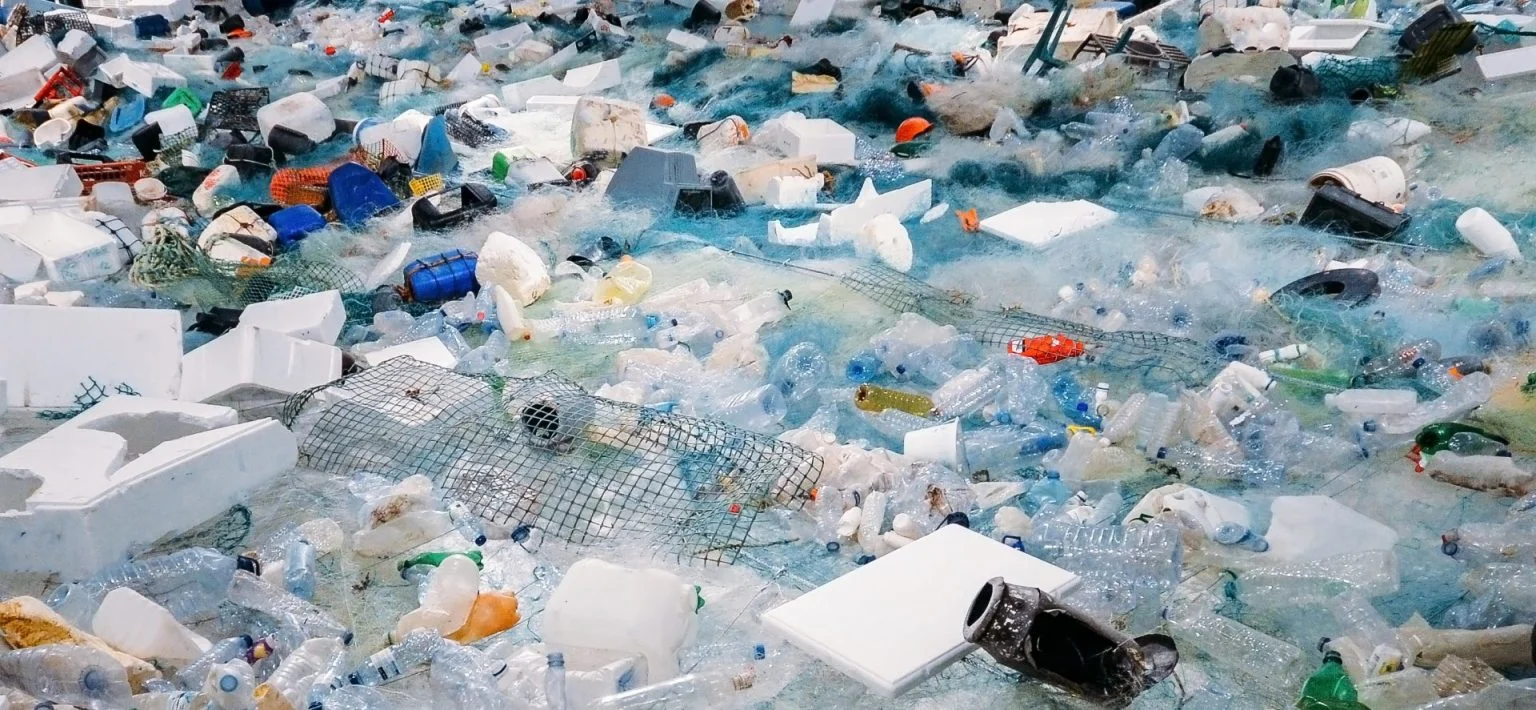
L.A. County to Take Big Bite Out of Plastic Pollution
L.A. County to Take Big Bite Out of Plastic Pollution
L.A.’s got a waste problem. A big one.
The numbers don’t lie:
- A. County creates about 28 million tons of solid waste each year, with the majority headed to our already taxed landfills. That’s enough trash to fill the Rose Bowl week in and week out for the entire year.
- Nearly 1 in 5 pieces of trash nationwide is a single-use plastic item.
- Less than 10% of all single-use plastics is recycled. That means tons of non-degradable plastics will hog our landfills for millennia and blight L.A. neighborhoods and oceans.
To get a better handle on what all this plastic pollution means for L.A. County and how to reduce it, the County’s Board of Supervisors directed the Chief Sustainability Office last year to commission a data-driven analysis from UCLA researchers. The survey focused on the food-service sector, one of the biggest culprits when it comes to pollution.
The report, issued this week by the university’s Center for Innovation in the Luskin School of Public Affairs, confirms what many experts in the waste area have long believed:
- Plastic waste creates serious environmental and economic damage to greater L.A.
- Food-service items have an outsized negative impact.
- Better recycling won’t solve the problem.
Here’s one telling example from the Coastal Conservancy about the amount of single-use plastic food items in the waste stream. International Coastal Cleanup Day volunteers collected nearly 100 million pieces of trash last September from the world’s beaches in 24 hours. Plastic straws and cutlery were the third and fourth most frequently found items on the shoreline.
Fortunately, there are alternatives to polystyrene containers, cups, straws and “sporks.” Practical and cost-effective solutions are on hand, as the report makes abundantly clear.
Here, Gary Gero, the County’s Chief Sustainability Officer, offers his take on the report and what L.A. needs to do win the battle against the scourge of single-use plastics.

What surprised you about the UCLA Report?
There were a few things that were surprising. Although we all know that there are serious issues with plastics recycling, it was still surprising to hear how limited our plastics recycling is locally. That it’s really just #1 and #2 plastics that are commonly recycled, and food-serviceware is almost never recycled, regardless of the material. The report also highlighted the nuances related to different types of compostable materials. It’s important that if we push for different disposable products that we make sure we’re not creating new problems.
On the flip side, it was surprising and heartening to see the conclusions related to economic impacts of moving our businesses to more sustainable materials. The economic costs of switching away from single-use plastics still tend to be overstated, given changes in product availability and other factors. So it was good to see this confirmed, and that reusables can actually result in long-term cost savings.
How is the County responding? What are next steps for reducing plastic waste?
Well, we asked UCLA to do this study because the Board wanted us to use the results to design effective policy to tackle some of our single-use plastics issues, so that’s what we’ll be doing next. We’re looking at a measure later this year that will reduce the use of single-use, plastic food-serviceware. We need to do more to promote the use of reusables, start using more compostable materials, and make sure that what people do toss in the recycling bin is actually recyclable!
Why is this initiative focused on food-service ware?
Food-serviceware is one of the major applications for single-use plastics, and it’s also probably the type of single-use plastic that people encounter most frequently day-to-day. It’s also relatively easy to do something about it — like bringing your own cups, straws and utensils when you dine at a fast-service type of restaurant. Tackling serviceware won’t solve all our problems related to single-use plastic. But it will make a significant dent, and hopefully will get people to think about the impact their choices have on this issue.
Plastics isn’t just about blight and taxpayer dollars, there’s a big tie to climate, right?
Yes, absolutely. Though to start off, the blight and taxpayer dollars are no joke. L.A. County spends millions of dollars a year on litter prevention, cleanup, and education. And as the UCLA report highlights, it’s likely that the County and ratepayers will be shouldering millions of dollars in added costs because of changes in the recycling market since 2018. We are no longer able to export our plastic waste to places like China, so now there’s a very significant cost in dealing with it.
As far as climate goes though, plastics are made from fossil fuels. And it’s been estimated that by 2050, plastic production will account for 20% of all fossil fuel consumption, so reducing our reliance on plastics has to be a major part of any strategy to address climate change. And, we’ve accelerated the rate at which we produce plastic. In fact, more than half of all the plastic ever produced has been produced in the last 15 years and a half of that is for things that are only used only once, like most foodware.
We need to get real with ourselves about the impacts of the convenience culture we all live in. The fact is that many of these products didn’t exist a few decades ago, and we now have a system that makes it incredibly difficult for people to choose to live sustainably. It’s important that people have choices, but we also want to make sure that they actually have good choices.
How do we help mom-and-pop restaurants and vendors prepare for this change? Do real-world alternatives really exist when I’m at my local taco stand?
Yes, we’re lucky to live in a thriving region where there are many different options available to restaurants. As the UCLA report puts it, the L.A. market for alternative materials like compostables is “consumer-favorable with regards to prices.” In other words, there are options that are very comparable in price, in some cases cheaper, than traditional materials like polystyrene.
There are many ways to help support mom-and-pop shops make this transition. For one, by making sure that businesses truly understand any policy we put in place and that there isn’t misinformation out there about what we’re requiring. We also want to make sure we allow ample time for any transition, and opportunities to request exemptions in cases of real hardship. We’ll also ensure that there are robust education and outreach efforts in place. And when a new policy is in place and enforceable, the focus will be working with individual restaurants to get them into compliance rather than any punitive measures.
How can the County move the needle when it comes to smarter waste policies?
We’re very proud of the leadership role that the County played in the passage of the statewide plastic bag ban in 2016. In terms of waste more generally, we want to partner with the other cities in our region to work towards consistency in how our region manages its waste. This would be a benefit to everyone: cities, residents, and businesses. Given the size of L.A. County’s $20 billion economy, we’re also hoping that what we do here sends a signal to businesses that we’re interested in more sustainable products and spurs innovation to meet those goals.
How does smarter waste management intersect with other goals of the plan?
Waste management is ultimately about how we use resources in general. When you think about it, almost all our pollution problems are ultimately resource management problems, the result of not thinking holistically about the entire life cycle of a product. We need to stop thinking about waste in a vacuum and start looking upstream to how it became waste in the first place. What materials were used, how they were put together, where they were made, and what other resources were used to make them and get them to our homes.
How does L.A. do overall when it comes to recycling? Is better recycling an answer?
There’s always more that we can do in terms of recycling, and part of that is making sure that single-use materials, materials that are meant to be tossed almost immediately, are actually recyclable. We also need more clarity for residents and businesses on what can and can’t be recycled. That said, while recycling is certainly part of the answer, recycling is never going to solve our waste issues. We need to reduce our waste overall and look at the use of compostable materials as well.
What can average person do in their home or business to help meet your ambitious waste goals?
One of the most important things people can do is think about how to reduce the amount of waste they create on a daily basis. Commit to carrying reusables with you, even it’s just cutting one single-use product out of your life, whether it’s a coffee cup, water bottle, straw, or utensils. Try to be aware of the amount of packaging on the products you purchase. Finally, be conscious of your food waste – buy what you can eat and eat what you buy. This will not only reduce food waste, but also your grocery bills!